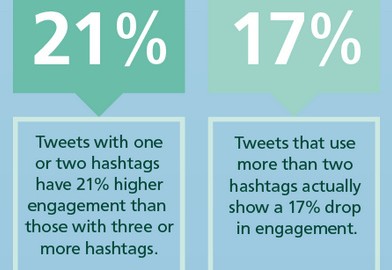It’s everywhere; Twitter, Instagram, Facebook, Google +, YouTube. It was even named “Word of the Year” in 2012 by the American Dialect Society and added to the Scrabble Dictionary in 2014. Hashtags have revolutionized how we discuss, engage with brands, and discover on social media. Originally created in 2007 by developer Chris Messina, hashtags have had quite the history. They’ve even redefined how we talk to each other offline. Justin Timberlake and Jimmy Fallon can better explain:
All jokes aside, when used properly, hashtags serve as a way to categorize your social media posts and sort them by specific keywords. Whenever the pound symbol (#) is placed in front of a word or phrase, social media platforms will automatically index the word and make it searchable on their site. It provides a very easy way to join a conversation, employ a marketing strategy, and bring awareness to a particular subject or topic.
In order to have a successful social media presence, it is important to understand the fundamentals of hashtags. Here are some tips to get you started:
1. Do not place punctuation, spaces, or special characters in your hashtag; it’ll automatically break and won’t work. You can include numbers, though!
2. Do not put too many words in your hashtag. You want users to organically find your content with keywords that they would actually search, not something that is extremely long and specific like #ThisHashtagIsSuperDuperVeryLong.
3. Do not #put #too #many #hashtags in your post. Readers will perceive it as spam and not take your post seriously.
4. Keep your hashtag simple but specific. If you are talking about cupcakes from the bakery Georgetown Cupcakes, use the hashtag #GeorgetownCupcakes, not just #cupcakes or #Georgetown.
5. Understand how hashtags are used for the particular Social Media platform you are using.
- Twitter: This is where it all started! Hashtags are used on Twitter to categorize topics. You can see what topics are trending and join those conversations by including the trending hashtags.
- Facebook: Hashtags here are similar to Twitter except when you search a hashtag, only content that was shared with you will show up. Facebook will also generate other related hashtags to help you find more relevant posts.
- Instagram: Hashtags on Instagram are used to describe photos and products used to take the photo. By clicking on a hashtag, you’ll be taken to a page that shows photos with similar content.
- Google+: Similar to Facebook and Twitter, hashtags are used to categorize topics. Google+ will add hashtags to certain content if it thinks it contains a popular keyword or relevant content.
- YouTube: Users most commonly use hashtags in the comment section of videos. When you click on the hashtag, it’ll take you to a search results page with videos that have the same hashtag in their title.
As a brand, it’s important that your hashtag effectively engages your audience, increases exposure to your brand, and creates positive brand associations. The last thing you want is for your hashtag to turn into a “bashtag.” Case in point: #McDStories.
Have any other tips for hashtags usage? Comment them below!
Digital & Social Articles on Business 2 Community(40)







